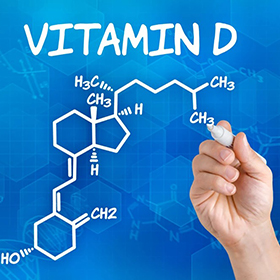
There were 15 million preterm births (PTB) (<37 weeks) worldwide and more than 1 million infant deaths from PTB complications each year. PTB is the leading cause of neonatal death and multiple short and long term health problems.
Multiple epidemiologic studies have found an association between higher levels of vitamin D ( 25-hydroxyvitamin D [25(OH)D] ) and lower PTB risk. In this study of 1,064 pregnancies with an overall rate of PTB of 13% women with higher vitamin D ≥40 ng/mL had a 62% lower risk of PTB compared to those <20 ng/mL. This is an outstanding finding and should be shared with everone
In clinical trials, 4000 IU/day of vitamin D was found to safely achieve a concentration of at least 32 ng/mL by early in the second trimester in a diverse group of pregnant women.
Unfortunately we are told to stay out of the sun and not to eat fat (which is why i recommend against both of these). The two major sources of vitamin D
Vitamin D is one of the essential nutrients required by the human body. Unlike most vitamins, it is one that we can manufacture on our own, given the right conditions. Despite this, vitamin D is showing up increasingly in populations as the most widespread and critical nutrient deficiency; this deficiency is linked to many diseases and disorders, costing billions of dollars each year. Our changing lifestyles, including increased indoor living and campaigns warning people to stay out of the sun have meant that most people don’t get enough vitamin D. The resulting deficiency is compounded by the consumption of modern and processed foods devoid of any vitamin D.
Vitamin D refers to two biologically inactive precursors: D3, also known as cholecalciferol (made from cholesterol), and D2, also known as ergocalciferol. Vitamin D is the only nutrient that can actually be synthesized by the human body, which technically means that it is not a vitamin. The synthesizing of vitamin D in the body can be achieved through contact with solar ultraviolet B radiation emitted by the sun. Without the presence of this solar radiation the only way to get vitamin D is through diet—hence, it is still classified as a “vitamin.”
In addition to vitamin D obtained through UVB exposure to the sun, this vitamin can be found in foods such as eggs, butter and fortified milk, with the highest levels found in fish. Remember, we evolved as fisher- hunter gatherers and fish used to be an essential part of our nutrition. Vitamin D can also be provided by supplements. Numerous studies have concluded that sensible sun exposure and supplementation are the most effective ways of increasing vitamin D levels.
Other deficiencies in vitamin D have been linked with a range of problems with the musculoskeletal system including low bone and muscle problems, as well as cardiovascular disease, diabetes and metabolic syndrome, cancer and impacts on the immune system, Parkinson’s Disease, asthma, pain, and pre eclampsia.
Studies have indicated that vitamin D supplementation may reduce the risk and difficulties associated with autoimmune disorders. In particular, there is strong evidence that vitamin D reduces the risk of multiple sclerosis and type 1 diabetes mellitus, and weaker evidence for rheumatoid arthritis, osteoarthritis, systematic lupus and erythematosusstar. There is no doubt about the link between vitamin D shortage and multiple sclerosis. There is a 41% decrease in MS risk for every 50 nanomoles per liter increase in 1,25-hydroxyvitamin in the blood. Vitamin D deficiency also predisposes to insulin resistance and pancreatic beta cell dysfunction. In a study of 10,366 Finnish children those given 2,000 IU of vitamin D3 per day throughout the first year of life experienced a 78% reduced risk of type 1 diabetes.
Considering the evidence, there is an overwhelming agreement between vitamin D researchers that current recommendations of 200 IU per day for children and adults up to 50 years of age for vitamin D need to be increased to 800 IU to 1000 IU vitamin D3. Numerous studies have shown supplementation to be effective in raising blood levels of Vitamin D levels with no evidence of intoxication reported in either the short- or long-term trial.
Sensible sun exposure (or UVB irradiation) along with supplements are required to satisfy the body’s vitamin D requirement. To achieve adequate levels of vitamin D we need to get one to two hours of sensible sun exposure a day. While it is prudent to avoid too much sun it is important to remember that the costs of vitamin D deficiency far outweigh the cost of skin cancer and some sun may also be necessary to reduce skin cancers. Remember, we did evolve in the sun but not all day, especially for those with fair skin.
Source
http://journals.plos.org/plosone/article?id=10.1371/journal.pone.0180483